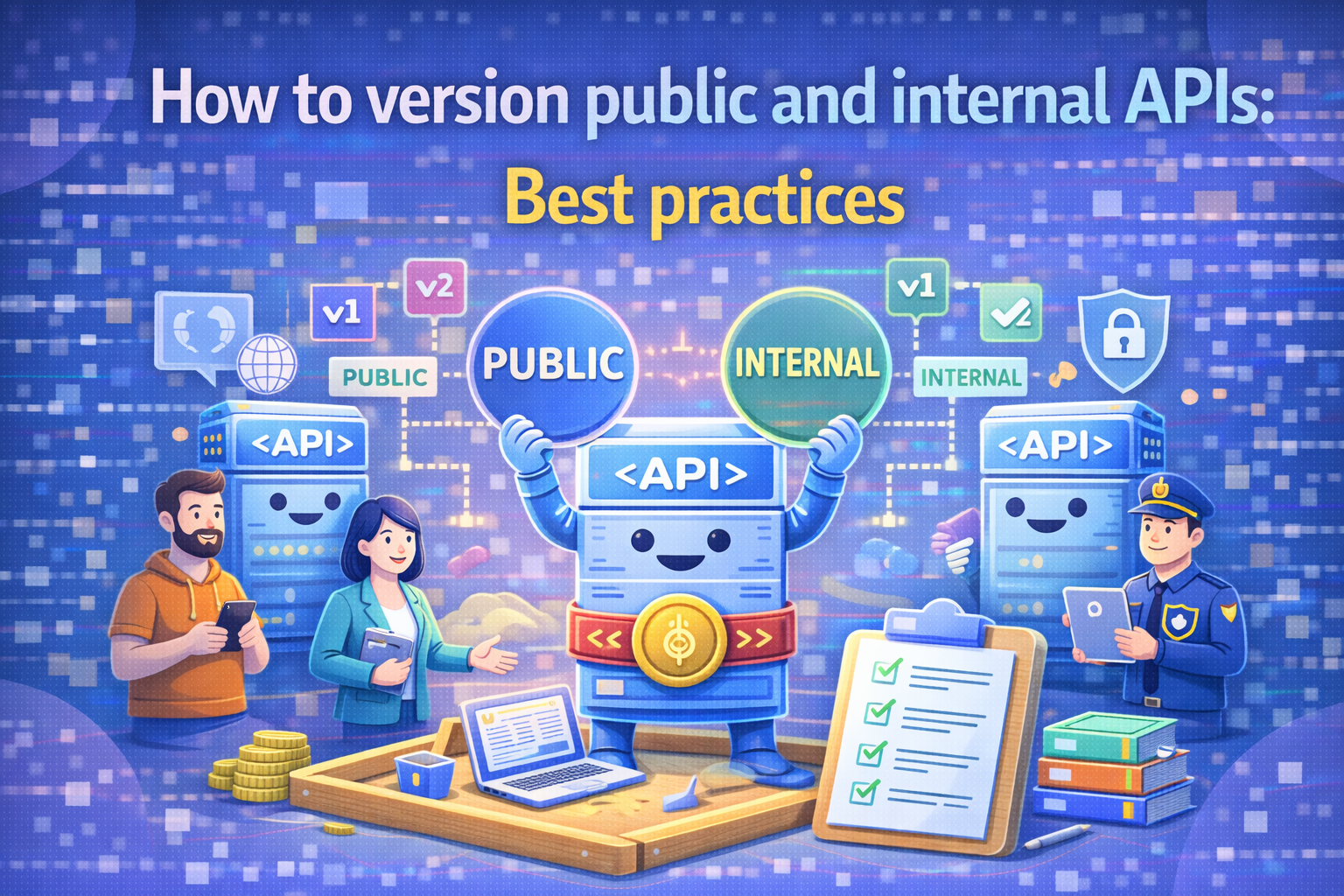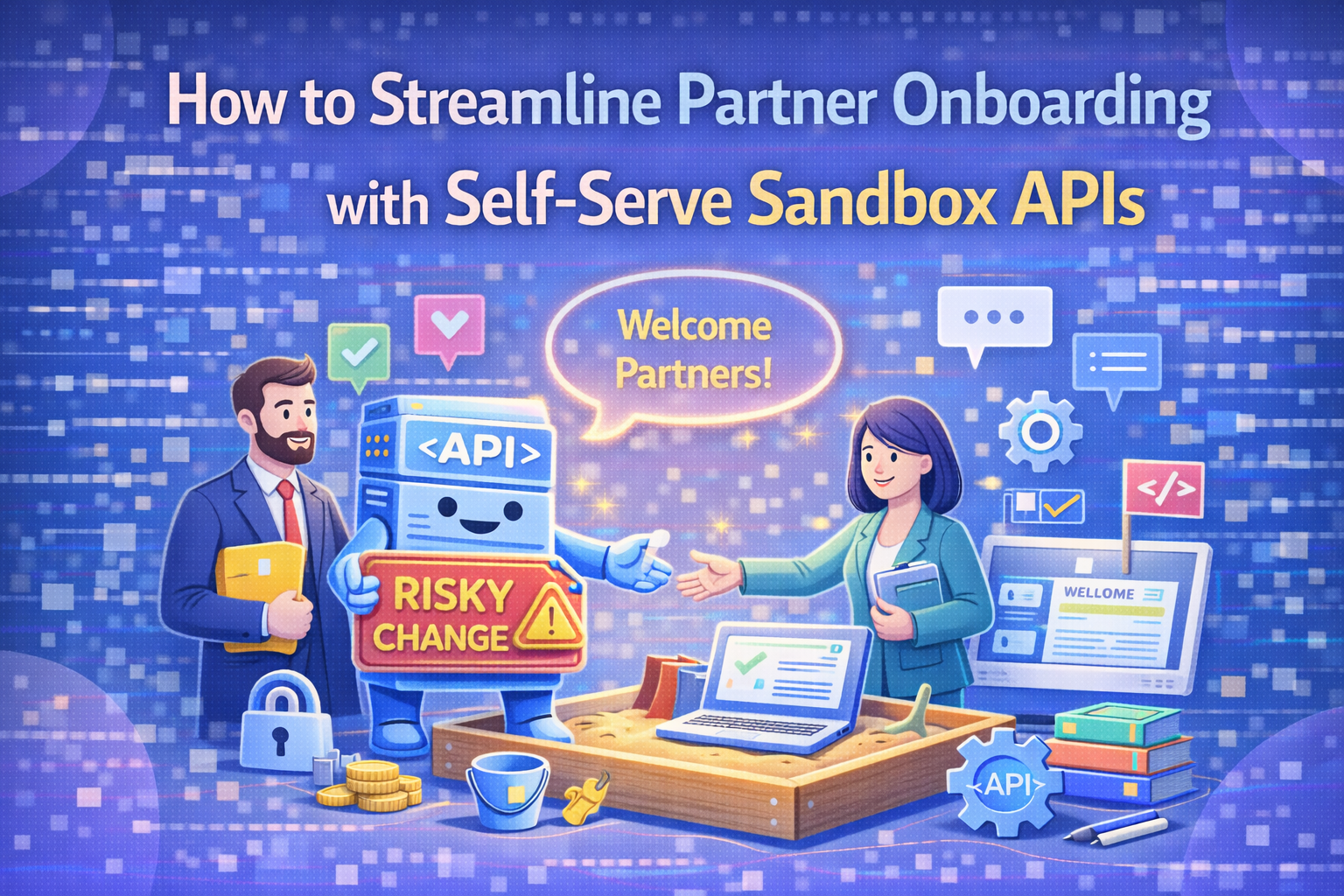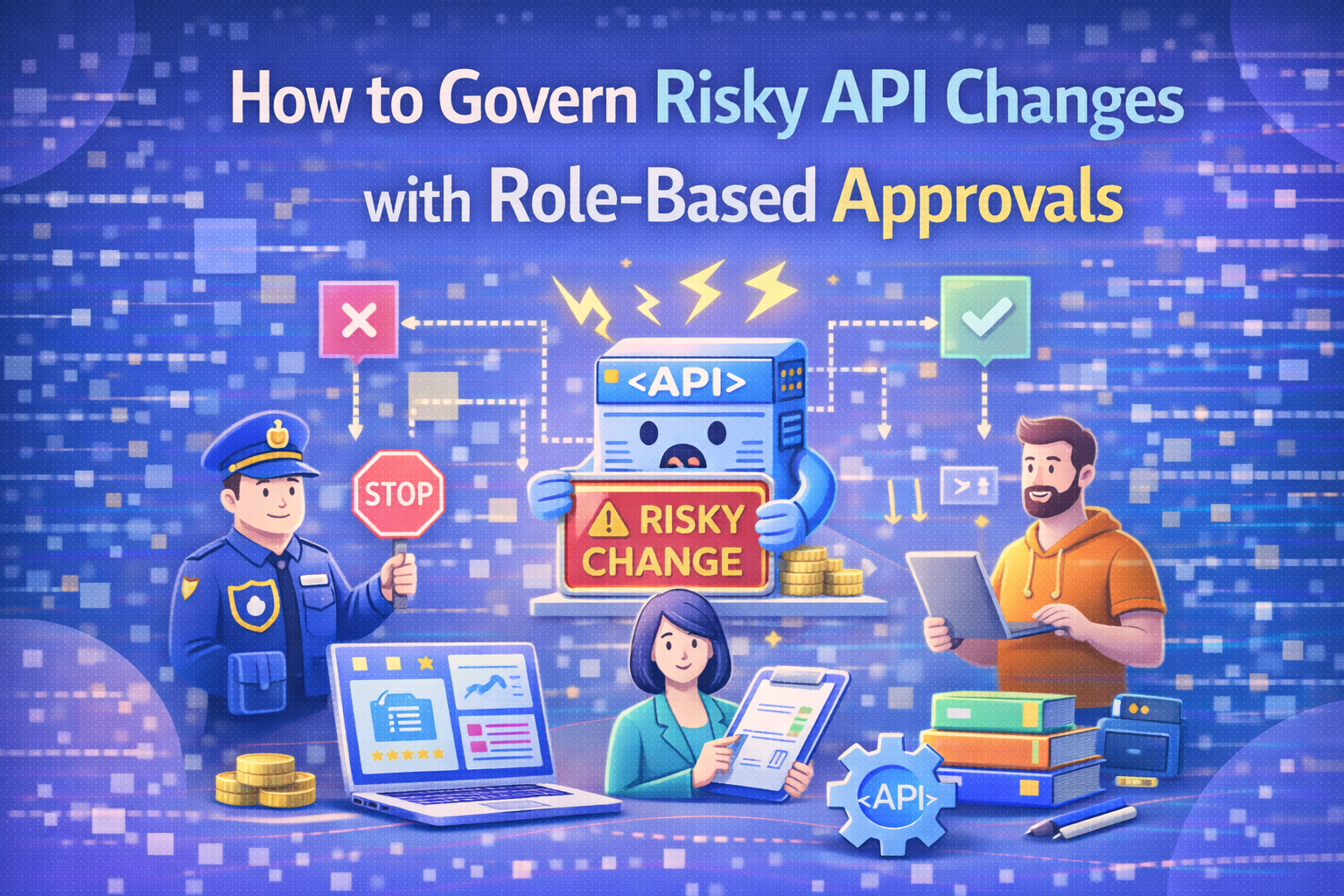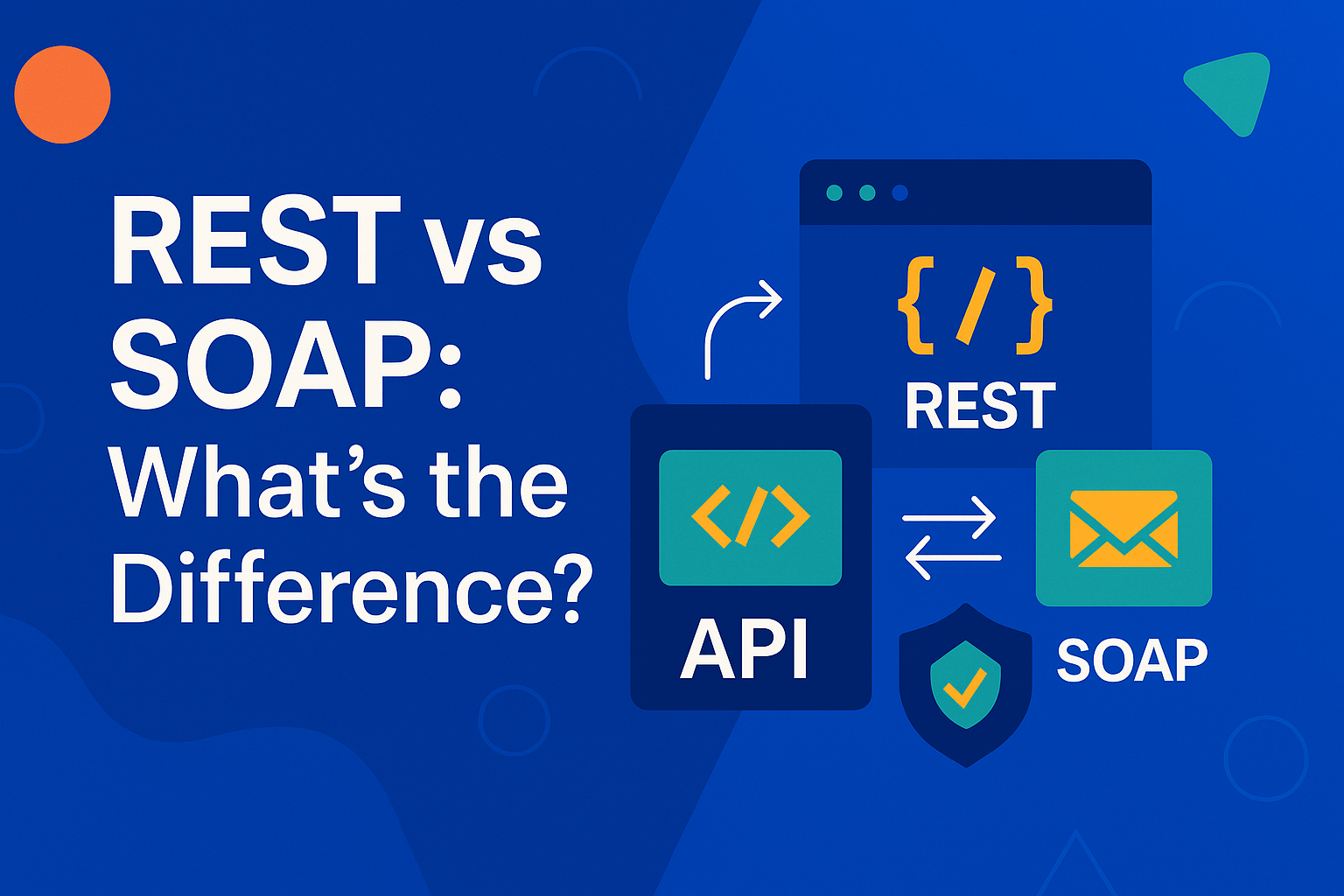
Unlike most modern APIs built with REST, many enterprise systems, banking networks, and legacy platforms still rely on SOAP. Understanding when to use one over the other can significantly impact performance, security, and long-term maintainability.
REST (Representational State Transfer) is a lightweight, stateless, and widely adopted protocol in modern web services, due to its simplicity and speed. SOAP (Simple Object Access Protocol), on the other hand, is protocol-based, offering rigid structure, formal contracts, and built-in error handling, often preferred in high-security, high-compliance environments.
This blog breaks down how REST and SOAP work, their pros and cons, and the key differences you need to know before choosing one. We’ll also cover where each fits best, whether you're building a mobile app, integrating payment gateways, or modernizing enterprise systems. Plus, we’ll explore emerging alternatives like GraphQL and gRPC to help you make informed, future-ready API decisions.
What is REST API, and how does it work?
REST (Representational State Transfer) is an architectural style for designing networked applications. It was introduced by Roy Fielding in his 2000 doctoral dissertation and has since become the foundation for most modern web APIs. REST is not a protocol but a set of constraints that promote scalability, simplicity, and stateless communication between client and server.
REST APIs use standard HTTP methods, like GET, POST, PUT, and DELETE, to perform operations on resources, which are identified using URLs. The communication typically happens using JSON or XML formats, though JSON is the dominant choice today due to its lightweight nature and ease of use.
Because REST is stateless, every request from a client must contain all the information needed to process the request. This design allows RESTful APIs to be highly scalable and cacheable, making them ideal for web and mobile applications.
How does a REST API work?
A REST API operates through a simple request-response cycle between a client (e.g., a web app, mobile app, or AI agent) and a server (e.g., a backend application or database system). Let’s break down how it works step-by-step:
1. Client makes an HTTP request
Using standard HTTP methods like GET, POST, PUT, or DELETE, the client calls the API endpoint.
2. Each resource has a unique URI
For example:
- GET /api/users → fetch all users
- GET /api/users/42 → fetch user with ID 42
- POST /api/users → create a new user
- PUT /api/users/42 → update user with ID 42
- DELETE /api/users/42 → delete user with ID 42
3. Server processes the request
The server reads the request, applies business logic, and returns a response.
4. Response includes a status code and payload
Some common status codes include
- 200 OK → success
- 201 Created → new resource created
- 400 Bad Request → invalid input
- 404 Not Found → resource doesn't exist
- 500 Internal Server Error → server-side issue
What is SOAP API, and how does it work?
SOAP (Simple Object Access Protocol) is a protocol specification used for exchanging structured information in web services. Unlike REST, which is an architectural style, SOAP is a formal protocol with strict standards defined by the World Wide Web Consortium (W3C). It uses XML as the messaging format and typically operates over HTTP, though it can also use other transport protocols like SMTP or JMS.
SOAP messages are highly structured and require a specific envelope format that defines the message body and any headers. This structure makes SOAP ideal for enterprise applications where reliability, transactional integrity, and built-in security (WS-Security) are critical, such as in banking, telecommunications, and government systems. Although heavier and more complex than REST, SOAP is still widely used where formal contracts and compliance are non-negotiable.
How does a SOAP API work?
SOAP APIs follow a structured, XML-based request-response model defined by strict standards. Unlike REST, they rely on a formal service contract (WSDL) and a rigid message format (SOAP envelope). This makes them ideal for secure, transactional, and enterprise-grade integrations.
- SOAP uses XML-based messaging: Every request and response is wrapped in a strict XML structure called the SOAP envelope. This includes headers (for metadata like authentication) and a body (for actual data).
- SOAP requires a service contract (WSDL): A WSDL (Web Services Description Language) file defines the operations the service offers, the data types it uses, and how to call them. Clients use WSDL to generate method stubs for calling the service.
- Communication typically happens over HTTP or HTTPS: Even though SOAP can use other protocols, HTTP(S) is the most common transport layer in web services today.
- The client sends a SOAP request to the server endpoint: This includes the method being invoked, parameters, and optional headers like authentication tokens or digital signatures.
- The server processes the request and responds with a SOAP response: The response is also an XML document wrapped in a SOAP envelope and includes the result or any fault message.
- SOAP supports advanced features like WS-Security, WS-ReliableMessaging, and ACID transactions: These extensions make it ideal for systems where security, message integrity, and delivery guarantees are essential.
- SOAP APIs are stateful or stateless depending on implementation: Unlike REST, SOAP allows stateful operations if required, which is useful in multi-step workflows or sessions.
Key differences between REST and SOAP APIs
While REST and SOAP both enable communication between systems over the web, they are built on fundamentally different principles. REST is geared toward simplicity, flexibility, and performance, whereas SOAP is focused on strict standards, reliability, and formal service contracts. Here’s a detailed breakdown of the key differences between the two.
1. Protocol vs. Architectural Style
SOAP is a protocol, a strict set of rules that define how messages should be structured and exchanged. It follows the WSDL (Web Services Description Language) contract and mandates a rigid XML envelope for every message.
REST is an architectural style, not a protocol. It is based on a set of design constraints like statelessness, cacheability, and a uniform interface. It doesn't define message formats or contracts, making it more adaptable for different use cases.
Example: A SOAP service will expose a WSDL that defines every function and its structure. A RESTful API, like Twitter’s or GitHub’s, simply exposes resources like /users/:id or /tweets/:id with standard HTTP methods.
2. Data Format and Message Structure
SOAP only supports XML for request and response payloads. Each message must follow a specific XML envelope structure, which includes headers, a body, and optional metadata. This adds verbosity but enforces strict typing and validation.
REST is format-flexible. It supports JSON, XML, HTML, or even plain text, though JSON is by far the most popular due to its readability and smaller payload size.
Example: A SOAP message to get a user might require 15 lines of XML.
A REST call would return a simple JSON object:
{ "id": 1, "name": "Alice" }
3. Service Definition and Contracts
SOAP requires a WSDL (Web Services Description Language) document. This XML-based contract defines the operations offered, input/output data types, binding protocols, and message formats. Clients generate code from WSDL to interact with the service.
REST has no contract requirement. However, modern REST APIs often use tools like OpenAPI (Swagger) to describe endpoints, request parameters, and responses in a human- and machine-readable format, but this is optional.
Example: An enterprise payment gateway using SOAP will expose a WSDL that clients must consume. A RESTful weather API may just provide documentation and a few example requests.
4. Transport Protocols
SOAP can use multiple transport protocols such as HTTP, SMTP, JMS, or even FTP. This gives it flexibility in non-web environments, such as message queues or email systems.
REST strictly uses HTTP or HTTPS as the transport layer and relies on the semantics of HTTP methods (GET, POST, PUT, DELETE) to define actions.
Example: A SOAP-based system might use JMS for messaging between services inside a bank’s internal network. A REST API for an e-commerce app will use HTTPS to expose endpoints to the public.
5. Security Standards
SOAP offers built-in support for security standards like WS-Security, which includes encryption, digital signatures, secure tokens, and identity propagation. This makes SOAP ideal for high-security environments like finance and healthcare.
REST does not have built-in security. It relies on HTTPS for transport-level encryption and typically uses mechanisms like OAuth 2.0, API keys, or JWT (JSON Web Tokens) for authentication and authorization.
Example: A government tax filing service might use SOAP with WS-Security and digital certificates. A SaaS analytics dashboard might use REST with a Bearer token in the request header.
6. Performance and Bandwidth
SOAP messages are heavy due to XML formatting, strict envelope structures, and extra metadata. This increases payload size and parsing time, making it slower, especially over mobile networks.
REST is lightweight, especially with JSON, and supports caching via HTTP headers (Cache-Control, ETag). This makes it much faster and more efficient in environments where bandwidth matters.
Example: A SOAP request to create a customer might be 2–3 KB of XML. The same REST request using JSON might be under 500 bytes.
7. Error Handling
SOAP has a well-defined fault structure within the XML envelope. A fault message includes a fault code, fault string, and optional details for debugging. It offers a consistent way to handle both application-level and transport-level errors.
REST uses standard HTTP status codes (e.g., 200 OK, 404 Not Found, 500 Internal Server Error) along with custom error messages in the response body. While easier to implement, this can be inconsistent across APIs.
Example: A SOAP fault might return:
<soap:Fault>
<faultcode>soap:Client</faultcode>
<faultstring>Invalid customer ID</faultstring>
</soap:Fault>
A REST error might return
{ "error": "Invalid customer ID", "status": 400 }
8. Stateful vs. Stateless Behavior
SOAP can operate in both stateful and stateless modes. It supports long-lived sessions, which is useful for operations that require context persistence, such as financial transactions or multi-step workflows.
REST is inherently stateless. Each request must carry all the information needed to process it. This makes REST APIs easier to scale, cache, and manage in distributed systems.
Example:
In a SOAP API, a session might be initiated to complete a multi-step purchase.
In REST, each step (e.g., add to cart, checkout, pay) is an independent, stateless call.
REST vs SOAP: A quick comparison table
Advantages and disadvantages of using REST APIs
REST has become the default choice for building modern APIs due to its simplicity, flexibility, and performance. However, it’s not ideal for every situation. Below is a detailed breakdown of the key advantages and disadvantages of using REST APIs.
Advantages of REST APIs
- Simplicity and ease of use: REST APIs are built on standard HTTP methods like GET, POST, PUT, and DELETE, making them intuitive and easy to learn for developers familiar with web technologies.
- Lightweight and fast: REST commonly uses JSON, which is more compact and faster to parse than XML. This makes REST ideal for mobile apps, front-end clients, and low-bandwidth environments.
- Scalability: REST APIs are stateless by design. Each request contains all the necessary information, which makes them easy to scale horizontally across multiple servers.
- Caching support: REST leverages standard HTTP caching headers (ETag, Cache-Control), enabling performance optimizations by reducing server load and response time.
- Platform and language agnostic: REST can be consumed by any client, browser, mobile app, AI agent, written in any language, as long as it supports HTTP.
- Flexibility in data formats: Although JSON is most common, REST can return data in other formats like XML, HTML, or plain text, depending on client needs.
- Broad tooling and ecosystem support: REST is supported by virtually all API gateways, developer tools (like Postman), documentation frameworks (like Swagger/OpenAPI), and monitoring platforms.
Disadvantages of REST APIs
- No formal contract enforcement: REST lacks a strict service contract like WSDL in SOAP. While OpenAPI specs can document REST APIs, they aren’t required or enforced by the architecture.
- Limited built-in security features: REST relies on HTTPS and external mechanisms (like OAuth2, JWT) for security. It does not offer message-level security or features like digital signatures out of the box.
- Inconsistent error handling: There is no standardized error format. Unless explicitly defined, each REST API might implement errors differently, making client-side handling inconsistent.
- Over-fetching or under-fetching of data: A single REST endpoint often returns fixed data. Without flexibility (like GraphQL), clients may receive more or less data than needed, impacting performance.
- Statelessness can limit complex workflows: Because REST is stateless, it’s less suited to multi-step operations that need session context (like transactions or step-by-step workflows).
- HTTP-only transport: REST is tightly bound to HTTP/HTTPS. If your use case needs non-HTTP protocols (like SMTP or messaging queues), REST may not be the right fit.
Advantages and disadvantages of using SOAP APIs
SOAP is often seen as complex compared to REST, but it's still widely used in systems that demand strict contracts, strong security, and formal reliability. Below are the core advantages and disadvantages of using SOAP APIs.
Advantages of SOAP APIs
- Formal contracts via WSDL: SOAP APIs use a WSDL (Web Services Description Language) file to define all available operations, input/output types, and communication rules. This allows for consistent, auto-generated client stubs and strong integration guarantees.
- Built-in security (WS-Security): SOAP supports WS-Security, enabling message-level encryption, digital signatures, authentication tokens, and more, critical for sectors like banking, healthcare, and government.
- ACID-compliant transactions: SOAP supports standards like WS-AtomicTransaction, making it ideal for applications that require reliable, atomic, and consistent multi-step operations.
- Protocol flexibility: While HTTP is common, SOAP also works over SMTP, JMS, TCP, and more, useful in legacy systems, enterprise messaging queues, and non-web environments.
- Detailed error handling: SOAP defines a standardized fault structure, providing consistent, structured error responses with specific fault codes and descriptions.
- Language and platform neutrality: SOAP is supported across major platforms and languages (Java, .NET, PHP, etc.), making it suitable for heterogeneous enterprise environments.
- Supports stateful operations: Unlike REST, SOAP can maintain stateful sessions when needed, which is useful for workflows that span multiple steps or depend on session context.
Disadvantages of SOAP APIs
- Verbose and heavy payloads: SOAP messages are XML-based and enveloped, resulting in large payload sizes. This increases bandwidth usage and processing time, especially in mobile or low-resource environments.
- Higher learning curve: Due to strict standards, XML schemas, WSDLs, and WS-* specifications, SOAP has a steeper learning curve for developers compared to REST.
- Limited performance on mobile and web: The verbosity of XML and lack of native caching make SOAP APIs slower and more resource-intensive on mobile networks or modern frontends.
- Tightly coupled with tools: SOAP relies heavily on tooling (e.g., WSDL parsers, code generators), which can create tight client-server coupling, reducing flexibility in agile environments.
- Not ideal for lightweight microservices: Due to its heavy structure and overhead, SOAP is less suitable for lightweight, fast-moving microservices or APIs consumed by JavaScript frontends.
- Poor support for caching: SOAP is not natively cacheable through HTTP mechanisms, which means every request typically hits the server, even for repeated data.
When to use REST: Best use cases
REST is widely adopted for its simplicity, flexibility, and strong alignment with the web's native architecture. It's stateless, lightweight, and easy to cache, making it ideal for high-performance systems, frontend-driven applications, and scalable backend services. Here are the top use cases where REST is the preferred choice.
1. Web and mobile applications
REST is the go-to protocol for web and mobile apps that need to communicate with a backend server. It uses standard HTTP verbs and lightweight payloads (often JSON), which are easy for front-end frameworks and mobile SDKs to consume. REST endpoints align naturally with UI components like lists, forms, and feeds.
Example: An e-commerce app built in React fetches product listings via GET /api/products, displays them in a grid, and adds items to a cart via POST /api/cart. Similarly, a mobile banking app uses REST APIs to check balances, transfer funds, or view transaction history, all with minimal latency.
2. Public APIs and developer platforms
REST is ideal for external-facing APIs because of its ease of use and widespread familiarity among developers. It supports clean documentation (via OpenAPI/Swagger), clear endpoint structures, and simple authentication using API keys or OAuth 2.0.
Example: Stripe’s API allows developers to initiate payments, manage subscriptions, and handle invoices through simple REST calls. A typical payment flow might involve POST /charges with customer data and card details. The predictable structure and JSON responses make integration seamless for developers.
3. Microservices architecture
REST is often used in microservice-based systems to enable communication between independently deployed services. RESTful APIs allow loosely coupled services to expose well-defined endpoints while maintaining their own internal logic and data.
Example: In a logistics platform, one microservice might handle inventory (/inventory), another shipping (/shipments), and another customer data (/customers). A central service aggregates data from all these REST APIs to render dashboards or generate reports.
4. Cloud applications and SaaS platforms
Cloud-native and SaaS applications rely on REST for integrations across services, third-party APIs, and internal components. REST plays well with API gateways, CI/CD pipelines, logging tools, and monitoring systems.
Example: A SaaS CRM like HubSpot exposes REST APIs to allow third-party tools to create leads, update contact data, or trigger workflows. Meanwhile, internal automation tools call REST endpoints to sync data between services.
5. IoT and lightweight devices
For Internet of Things (IoT) applications, REST’s low overhead and stateless nature are a major advantage. Devices with limited memory or processing power can use REST over HTTP to send and receive data efficiently.
Example: A smart thermostat periodically sends temperature readings to a central server using POST /api/sensors/temperature. The server responds with JSON commands like { "target": 22.5 } that adjust settings remotely.
When to use SOAP: Best use cases
SOAP is the preferred choice in environments that require strict contracts, robust security, and guaranteed message delivery. It is particularly suited for complex enterprise workflows, legacy integrations, and regulated industries where compliance is critical. Here are the five use cases where SOAP is the better fit over REST.
1. Enterprise systems and legacy integrations
Many large organisations, especially in sectors like banking, telecom, and insurance, still run on legacy systems that were built using SOAP. These systems rely on WSDL contracts, XML schemas, and require structured message handling.
Example: A core banking system may expose a SOAP API for account validation, fund transfers, and regulatory reporting. These systems depend on features like message validation, schema enforcement, and support for long-running transactions.
2. Operations requiring high security and compliance
SOAP supports WS-Security, which provides message-level encryption, digital signatures, and security tokens. This is crucial in industries where data integrity and confidentiality must be ensured beyond transport-layer encryption.
Example: A healthcare provider using SOAP APIs to exchange patient records with government registries must comply with HIPAA. WS-Security ensures that sensitive medical data is encrypted and signed at the message level, even as it passes through multiple systems.
3. Asynchronous and reliable messaging
SOAP is well-suited for systems that require guaranteed delivery, message ordering, or transactional integrity, features supported by WS-ReliableMessaging and WS-AtomicTransaction.
Example: A supply chain management system might use SOAP to process large-scale purchase orders between suppliers and distributors. If a message fails mid-delivery, WS-ReliableMessaging ensures it’s retried or queued properly without data loss.
4. Complex, multi-step business workflows
In workflows that span multiple operations and require state to be maintained across steps (e.g., login → authorize → submit form → validate → commit), SOAP offers session-based communication and formal message orchestration.
Example: A government e-filing service uses SOAP to manage tax return submissions. The process involves several stages: identity verification, pre-validation, document submission, and final acknowledgment, all maintained in a single session.
5. Cross-platform or multi-protocol communication
SOAP’s ability to work over various transport protocols, like HTTP, SMTP, JMS, and more, makes it ideal for enterprise service buses and systems that rely on messaging queues or email-based communication.
Example: In a telecom backend, SOAP messages might be sent over JMS between internal services, while external APIs expose the same logic over HTTP to partners. This flexibility helps unify internal and external integrations without changing business logic.
Similarities between REST and SOAP
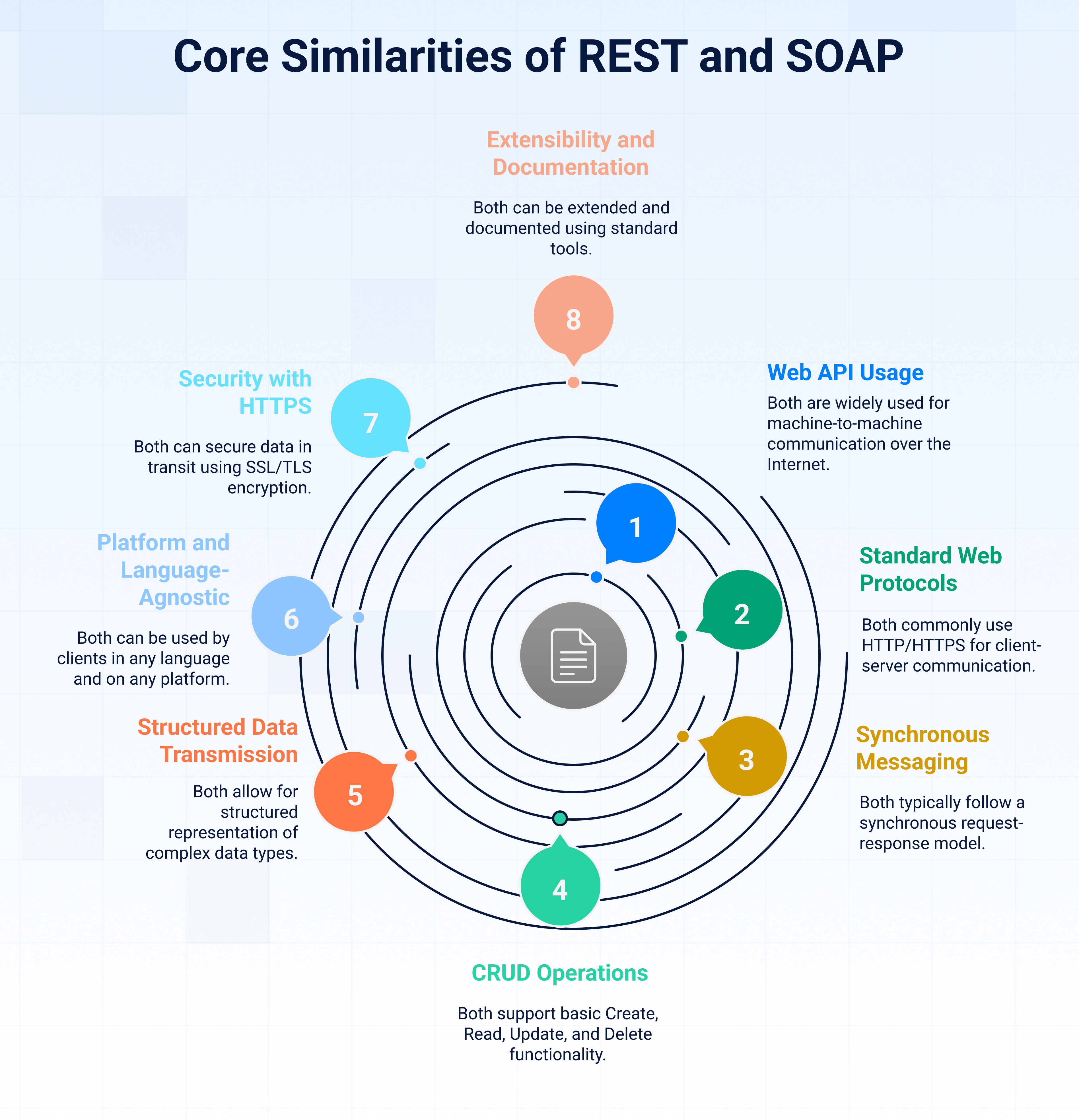
Despite their architectural and structural differences, REST and SOAP share several core principles. Both serve the same fundamental purpose: enabling communication between distributed systems, often across networks and platforms. Below are the key similarities that unify these two approaches to API design.
1. Used for building web APIs
REST and SOAP are among the most widely used protocols for enabling machine-to-machine communication over the Internet. They allow clients and servers to exchange data, trigger operations, and integrate systems programmatically.
2. Operates over standard web protocols (primarily HTTP)
While SOAP can use multiple transport layers (HTTP, SMTP, JMS), both REST and SOAP commonly rely on HTTP or HTTPS for client-server communication, making them accessible via standard web infrastructure like browsers, proxies, and firewalls.
3. Supports synchronous request-response messaging
REST and SOAP APIs typically follow a synchronous model, where the client sends a request and waits for the server’s response in real time. This is the standard model for most modern API interactions.
4. Supports CRUD operations
Both styles allow for basic Create, Read, Update, and Delete functionality:
- In REST: via HTTP verbs (POST, GET, PUT, DELETE)
- In SOAP: via explicitly named operations defined in WSDL contracts
5. Transmits structured data
Though the formats differ, JSON/XML for REST, XML for SOAP, both allow for the structured representation of complex data types like arrays, objects, and nested records.
6. Platform and language-agnostic
Both REST and SOAP can be consumed by clients written in any language (Java, Python, C#, JavaScript) and run on any platform, as long as they support HTTP and can parse the data format.
7. Secured with HTTPS
While SOAP offers additional built-in security layers (e.g., WS-Security), both can secure data in transit using SSL/TLS encryption via HTTPS to protect against eavesdropping and tampering.
8. Extensible and can be documented
You can extend both with headers, metadata, and custom authentication. REST APIs are often documented with OpenAPI (Swagger), while SOAP APIs use WSDL to define structure and operations.
Common misconceptions about REST and SOAP
REST and SOAP are often compared, misunderstood, and even misrepresented, especially by those new to API design. While both serve different architectural purposes, many assumptions about their capabilities or limitations are incorrect. Let’s clear up the most common misconceptions around each.
Misconceptions about REST
- REST is always faster than SOAP: While REST is usually lighter due to JSON and statelessness, it’s not always faster. Poor implementation, unoptimized payloads, or excessive API chaining can still result in performance issues.
- REST doesn’t support security: REST can be highly secure when implemented with HTTPS, OAuth 2.0, API keys, or JWT. While it lacks built-in message-level security like SOAP, it’s perfectly suitable for sensitive applications when properly secured.
- REST is only for public APIs: Though REST is popular for public APIs, it’s also widely used internally for microservices, backend services, and system-to-system communication in enterprise applications.
- REST doesn’t support complex data: REST can handle complex nested objects using JSON or XML. It may not enforce strict typing like SOAP, but with good schema documentation (via OpenAPI), REST can handle highly structured data.
- REST is stateless in all cases: While REST is designed to be stateless, developers can simulate session-like behaviour using tokens, cookies, or client-managed context. Statelessness is a constraint, not an absolute limitation.
Misconceptions about SOAP
- SOAP is outdated or obsolete: Despite being older than REST, SOAP is still widely used in finance, healthcare, telecom, and government systems where contracts, reliability, and security are critical.
- SOAP only works over HTTP: SOAP can operate over multiple transport protocols, including HTTP, SMTP, JMS, and even raw TCP, making it flexible for enterprise messaging use cases.
- SOAP is not web-friendly: While SOAP is more verbose and complex than REST, it works perfectly fine over HTTP/HTTPS and is fully compatible with firewalls, proxies, and standard web infrastructure.
- SOAP can’t be used with mobile apps: It’s true that REST is preferred for mobile apps due to lightweight payloads, but SOAP can still be used, especially in mobile enterprise apps that require strong authentication or interact with existing SOAP backends.
- SOAP and REST are interchangeable: They are fundamentally different in design philosophy. SOAP is contract-driven and rigid; REST is resource-oriented and flexible. Choosing one over the other depends on your system’s security, performance, and integration needs, not just developer preference.
Modern alternatives to REST and SOAP APIs
As applications evolve to become more dynamic, distributed, and real-time, developers are turning to newer API paradigms that go beyond the traditional REST and SOAP models. These alternatives offer more flexibility, better performance, and support for complex client requirements like selective data fetching and streaming.
1. GraphQL
GraphQL is a query language and runtime developed by Facebook that allows clients to request exactly the data they need, nothing more, nothing less. Unlike REST, which returns fixed data structures, GraphQL enables clients to shape responses dynamically. It's ideal for frontend-heavy applications like SPAs or mobile apps that need precise control over data payloads.
2. gRPC
gRPC (Google Remote Procedure Call) is a high-performance, open-source framework that uses Protocol Buffers (Protobuf) for serialization. It supports bi-directional streaming, strong typing, and efficient binary messaging, making it ideal for microservices and low-latency internal systems. gRPC works over HTTP/2 and offers built-in authentication and load balancing features.
3. WebSockets
WebSockets provide full-duplex, persistent communication between client and server, enabling real-time data flow. This is particularly useful for chat applications, multiplayer games, live dashboards, and collaborative tools. Unlike REST or SOAP, WebSockets maintain an open connection, reducing the overhead of repeated HTTP requests.
4. Server-Sent Events (SSE)
SSE is a lightweight alternative for pushing real-time updates from server to client over a single HTTP connection. It’s useful for use cases like stock tickers, news feeds, or activity streams where the client doesn’t need to send messages back. SSE is simpler than WebSockets for unidirectional, server-to-client updates.
5. AsyncAPI (for event-driven architectures)
AsyncAPI is an emerging standard for defining and documenting event-driven APIs, especially in systems using message brokers like Kafka, MQTT, or AMQP. Unlike REST, which is request-response based, AsyncAPI supports asynchronous workflows where services communicate through events, making it ideal for modern distributed systems and IoT platforms.
Final thoughts: Which API protocol should you choose?
Choosing between REST, SOAP, or a modern alternative depends entirely on your project’s goals, constraints, and environment. If you're building a lightweight, scalable web or mobile app where flexibility and speed matter, REST is often the best fit. It’s simple, developer-friendly, and widely supported across tools and platforms.
However, if you're working in a regulated enterprise ecosystem that demands strict contracts, message-level security, and guaranteed delivery, then SOAP remains a strong and relevant choice, especially in industries like banking, healthcare, and telecom.
For systems that need real-time updates, fine-grained data fetching, or low-latency communication, consider GraphQL, gRPC, or WebSockets as more modern, specialised options.
In short, there's no one-size-fits-all. Evaluate each protocol based on performance needs, team expertise, compliance requirements, and long-term maintainability. Often, organisations use a combination, REST externally, SOAP internally, and gRPC or GraphQL for service-to-service communication. The key is choosing intentionally, not habitually.
You’ve spent years battling your API problem. Give us 60 minutes to show you the solution.
.svg)

%20(1).png)

